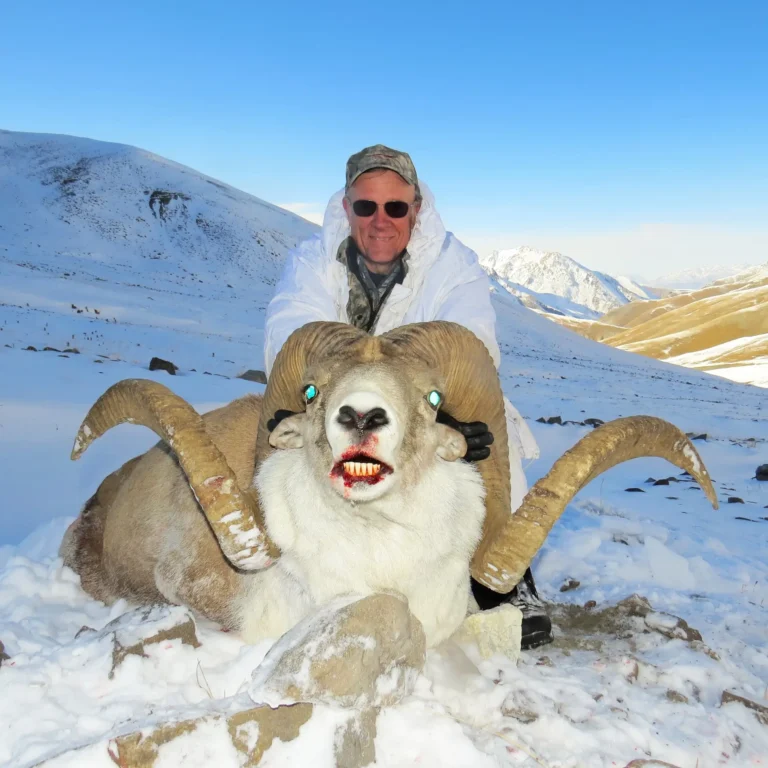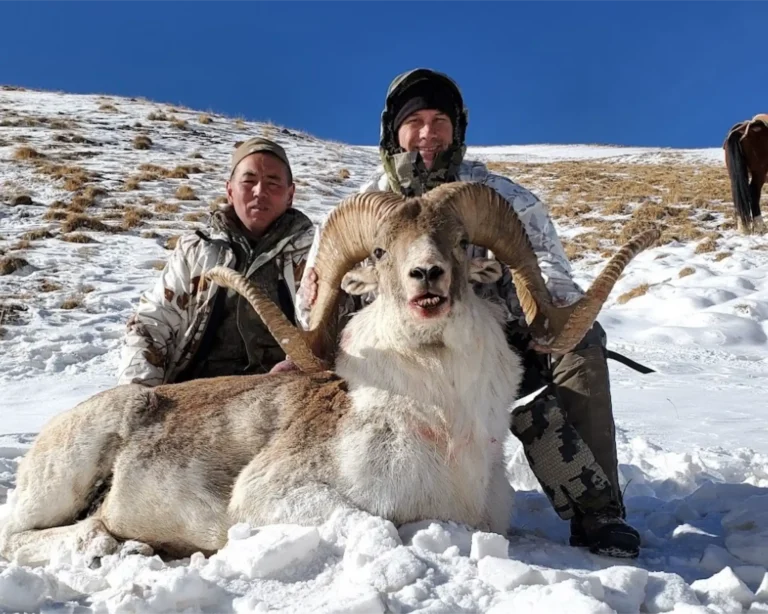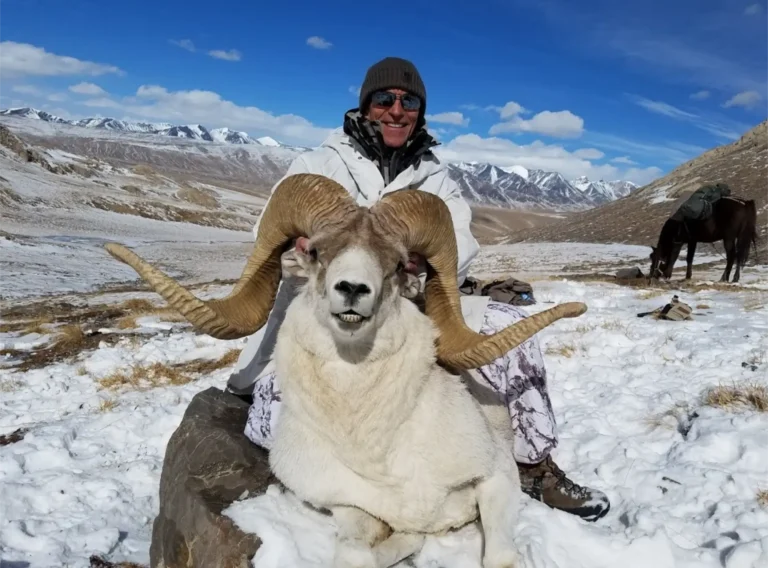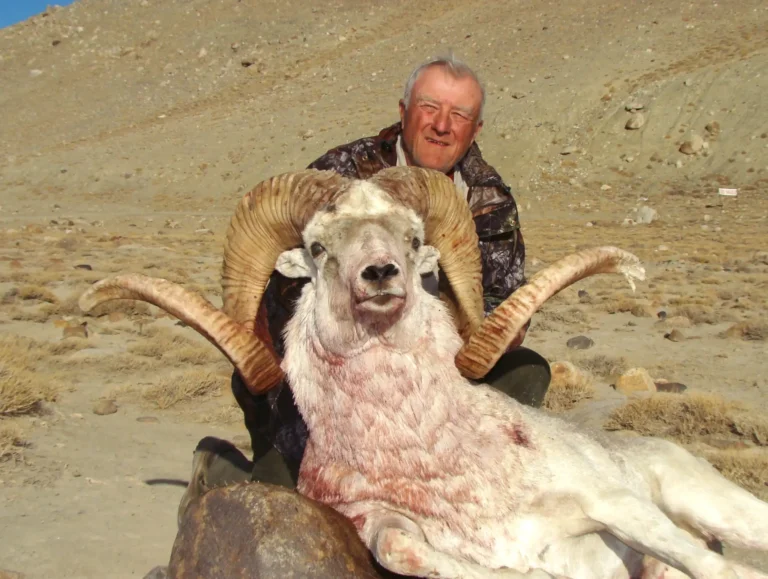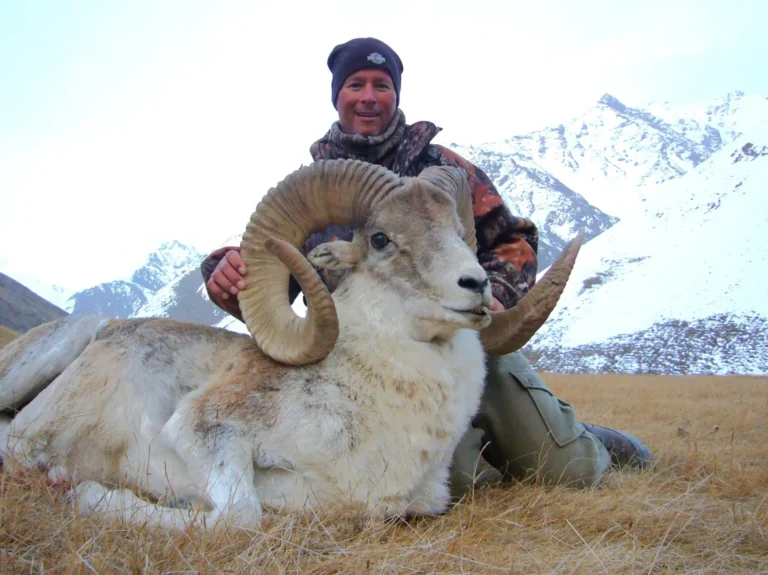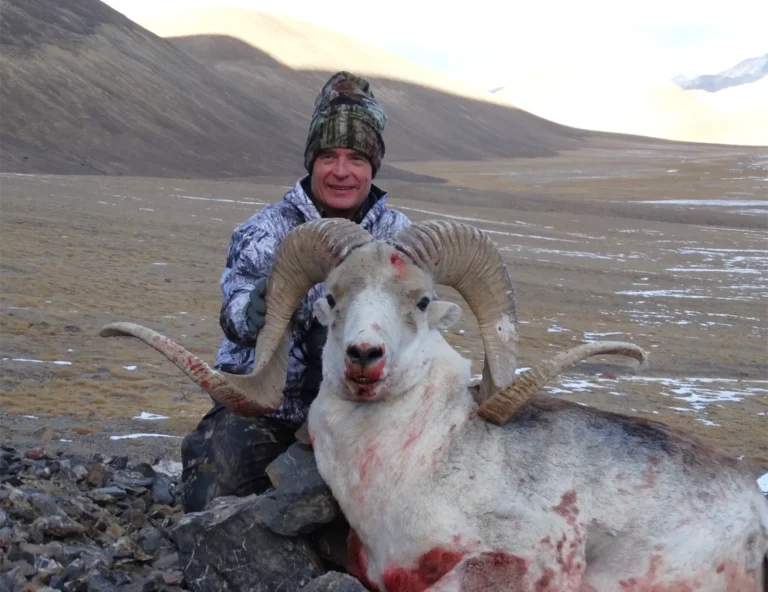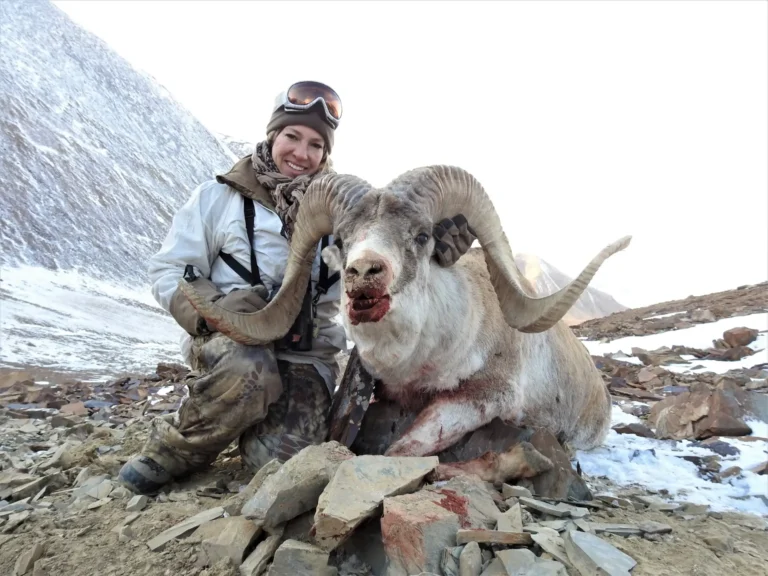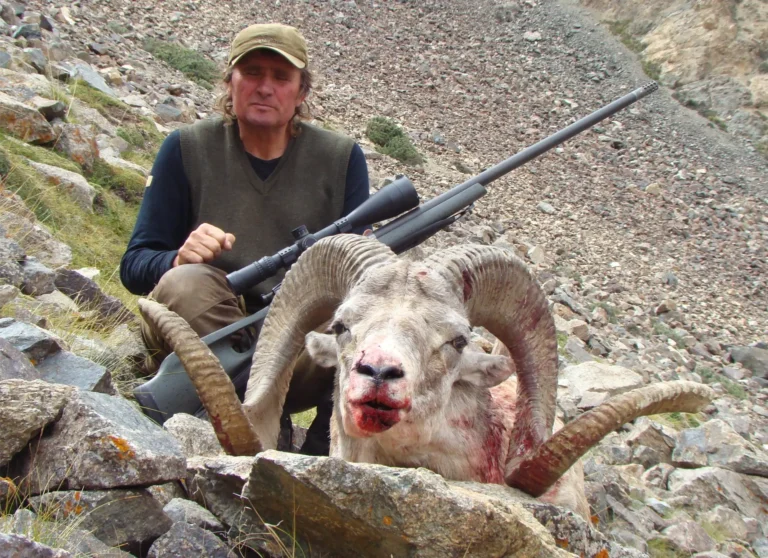SEASON: The argali hunting season in Kyrgyzistan runs from September 1st through the end of November.
Although debateable, many consider best time to be October and November mostly because the weather conditions will be most favorable. September and October are the warmest time of the whole hunting season in Kyrgyzistan. Although the sheep can be expected at the higher elevations early in the season, there will be enough rams to choose from on the mountain sides. For the hunters whose priority is an enjoyable hunt, early season hunts may be more accommodating. The temperatures will not be too low and will allow a more enjoyable hunt.
On the other hand, late season hunts, when the rut is on or when the snow draws the argali down to lower elevations, may give the hunters better opportunity to harvest older rams. December is the rutting time for the Hume argali but by late November sheep start descending to the valleys from nearby peaks in China. Older rams intermix with ewe groups prior to rut. Some hunters may want to take advantage of rutting time when the older, long horned rams intermingle with ewe groups.
AREA: Some of the game species of Kyrgyzstan has been a controversial issue for many years. Only in 2003 trophy classification committee of GSC / OVIS has decided to classify the Hume argali as another subspecies in addition to Marco Polo and Karelini (Tian Shan), while organizations like SCI and USFWS recognize only the latter two subspecies. Ovis club uses the Naryn River as the northern boundary for the Hume argali and Fergansky mountains as the southern stretch.
HOW TO GET THERE: Hunters are required to fly into the capitol city Bishkek, the only port of entry to the country. They will be met by our representative at the airport and be asssited for the rifle clearance at the customs. This is a simple procedure that can take 10-15 minute while you sit in the VIP lounge and enjoy your coffee.
There are several different camps to hunt Hume argali. Most of them can be reached with a 4-6 hour ride on asphalt and dirt road while other can require up to 12 hours of traveling.
ACCOMMODATION: As a general rule, most hunting camps in Kyrgyzstan offers the near-luxury camp conditions with food prepared by a chef, an on-site taxidermist to take care of the trophies and a group of knowledgeable and experienced hunting guides who are familiar with every peak and valley of the argali habitat. Hunters always are accommodated in their own rooms for a good night’s rest. Camps can provide hot shower or even sauna to soothe the fatique of a tiring hunting day.
WEATHER: Tien-Shan is one of the largest and highest mountain systems in Asia. It stretches about 1,500 miles (2,500 kilometers) between the Samarkand area in Uzbekistan in the west and the border of China and Mongolia in the east. The vast high plateau where the argali live is subject to severly cold winds and rather arid climatic conditions throughout the year. Temperatures are milder early in the season and will get progressively colder later in the season, with sub-zero temperatures possible in December, until March. Normal daytime temperatures in October will range between 10°C to 15°C (50°F to 60°F), with night time temperatures varying from -2 to -10°C (28 to 50°F). The mean November temperature will be 7°C (45°F) with expected sub-zero temperatures towards the end of the month. December temperatures will be anywhere between 2°C to -6°C (37°F to 20°F).
ALTITUDE: With nine-tenths of the country being mountainous, only half of Kyrgyzstan’s 76.641 square mile territory falls below 10.000’’ and rises on peaks up to 24.300 feet. Most of the argali camps are located at approximately 9,500 feet (2,900 meters) above sea level, with the majority of the hunting conducted between 9,500 and 12,000 feet (2,900-3,700 meters)
DURATION of the HUNT: Our Hume argali hunting organisations are for 10 days including the 2 days of traveling time. So actual hunting time is 8 days although almost all our hunts end earlier.
HUNTING METHOD: Kyrgyzstan holds a healthy population of Marco Polo. However, unlike Tajikistan, the sheep here is scattered across the country, which causes the misconception of thinned out population. Nevertheless, national game survey carried out by the Kyrgyz Game Department shows that the country is home to approximately 10.000 argali which is equal to population on the Pamir.
Hunting in Kyrgyzistan is handled differently than the neighboring Tajikistan. Here, elevations are moderate compared to Tajikistan and hunts take place almost always at less than 13.000 feet, sometimes even as low as 9,500. These hunts require long hours of horse riding for ten consecutive days in search of a trophy of a lifetime
Marco Polo hunting is not so different than any other sheep hunting around the world. It takes a lot of glassing and climbing to some degree. As it is with all other sheep hunting, locating the sheep before it detects you is of utmost importance. Their sense of smell is accute and under favorable conditions they can detect human scent at long distance. But it is argali’s extrememly keen eyesight that detects the hunter from miles away first. As highly visual animals, they avoid mountainsides where visibility is limited and prefer open faces of the mountains or valley bottoms. Drainages with little or no cover are a stalking nightmare. This coupled with the tendency of poli rams to be quite spooky make shooting at extreme long range commonplace at times.
As a general rule, argali sheep are spotted feeding on the valley floor or low on the mountain sides in early morning. Once they are done with feeding, they tend to climb to a vantage point where their keen eyesight can cover all visible activities below them. During mid day they chew their cud and rest until it is time to go back to their feeding activity. By afternoon they are likely to be heading for a ridge or a bluff or any point where they can lie in safety. However a late afternoon feeding period is not very uncommon especially in fall time although this usually happens in the direction of sanctuary.
As a general rule, rams are prone to end their feeding shortly before daylight. But this can change during the late season since the animals will want to graze nearly all day in order to store enough fat in their body that will last throughout the winter.

